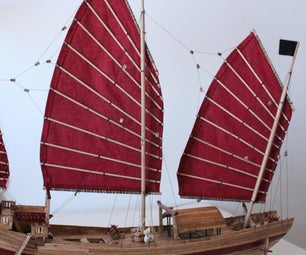Introduction: DIY Scrap Wood Ocean Coasters
Want to see this build in action? Check out my my video on YouTube & please subscribe!
If there are two things you guys know I love so much it’s scrap wood projects and coasters. So, as a fun little holiday break project, I created some DIY scrap wood ocean coasters as a gift for a Secret Santa I was part of! In hindsight, this probably would have been a better project to share before holiday season, but it’s never too late to start planning for next year, right? Let’s do this!
Supplies
Tools
Miter Saw
Sander & Sandpaper
Coaster Molds
Heat Gun
Butane Torch
Epoxy Mixing Products
Wood Clamps
Tape Measure
Pencil
Materials
Scrap Wood
MAS Table Top Epoxy (use code “DIYHUNTRESS” for 20% off + free shipping)
Black Pigment
Blue Pigment
White Pigment
Beeswax Wood Finish
Adhesive Cork
Step 1: Cut the Wood
First, I grabbed some scrap wood and cut it into sizes that would fit the coaster molds I had on hand.
Step 2: Sand & Prep
Next, I sanded the wood before putting it in the molds. I then clamped the wood into the molds to prevent it from floating in the epoxy (I tape my clamps so they don't stick to the epoxy if there happens to be some over pouring).
Step 3: Pour Your First Layer
This part is optional if you’re not using live edge wood, but I filled the void in the mold from my scraps with MAS table top epoxy that I tinted with black pigment.
Step 4: Sand Coasters Flat
I let the table top epoxy cure over night before removing the coasters from the mold to sand flat.
Step 5: Protect the Bottom
After sanding the coasters flat, it was time for my ocean pour. I started by taping the bottom edge of the coasters to prevent resin build up.
Step 6: Pour Your Ocean
Next, I started my pour with my darkest pigment first, followed by clear. I blended those together and spread them over the coaster with my heat gun before adding the white and then blowing in that pigment as well. I then used my propane torch to pop any bubbles and add some extra heat.
You can see this process in action in my YouTube tutorial!
Step 7: Remove Tape & Sand
After letting the coasters cure for about 8 hours I removed them from the molds and removed the tape from the bottom of the coasters.
Step 8: Add Corking
Next, I added adhesive corking and then trimmed it using a razor blade. I also hand-sanded away any rough edges and scuffed up the bottom of the coasters to prep for the adhesive cork backing.
Step 9: Finish & Serve!
I then finished the wood portion of the coasters with a beeswax finish!

Participated in the
Anything Goes Contest














Comments
2 years ago
I love these! It's like having a slice of beach at the table. Great idea and execution.